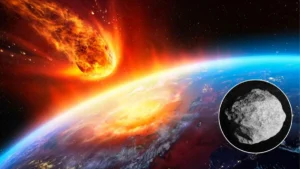Dand according to the study, which used satellite images captured between 2011 and 2015 and compared them with those existing years before, 92% of the area is covered by Amazonian mangroves (forests that have vegetation adapted to the mouths of rivers and beaches), 7% by salt flats common in mangrove areas and only 1% was affected by road construction or urban expansion.
This vegetation is important because it ensures the maintenance of the region’s biodiversity and the fight against climate change.
The areas most affected by human activity are the salt flats, which in a small part have been adapted for raising shrimp, crabs and other marine species.
The greatest degradation was caused by the construction, in the 1970s and 1980s, of the regional road PA-458, which cut the mangrove for 26 kilometers.
“The mangrove swamps of the Brazilian Amazon are the largest in the world and the best preserved precisely because of their natural exuberance, as their floodplains and mud deposits are up to 40 kilometers wide and trees up to 30 meters high”, biologist Pedro Walfir Souza Filho, researcher at ITV and leader of the study, told EFE.
The specialist also attributed the preservation to the absence of large cities in its surroundings, the low population density, the difficulties of access and the lack of infrastructure such as electricity transmission lines.
“It is also important to highlight that several conservation units were created in the last 20 years along the coast with the aim of preventing the degradation of this important ecosystem”, explained Souza Filho, who estimates that the environmental reserves protect about 80% of the area.
This coastal Amazonian biome accounts for about 80% of all mangroves in Brazil and extends for 678 kilometers from the north coast of Brazil over the Atlantic and to the south of the mouth of the Amazon.
Souza Filho ruled out that the possibility of Brazil approving oil exploration in the promising reserves of the so-called Equatorial Margin, in very deep waters of the Atlantic and opposite the mouth of the Amazon, threatens the mangroves.
“The exploration areas are on the high seas, in an area with strong action from the oceanic current north of Brazil, which flows at speeds greater than one meter per second in a northwesterly direction. That way, in the event of a possible leak, the spilled oil will not go south,” he said.
“In my opinion, the daily transport of fuel along the rivers of the Amazon represents a much greater risk of contamination than the exploitation of oil deposits more than 150 kilometers from the coast and at depths greater than 2,000 meters”, he added.
Souza Filho considered that one of the main threats to the ecosystem is global warming, because the rise in sea level has caused the mangroves to migrate upstream due to the salinization of the river channels.
The specialist stated that it is a threat to an important ecosystem to help combat climate change, because studies show that mangroves have a capacity to capture twice as much carbon dioxide as the Amazon rainforest itself.
“Their conservation is essential so that these sequestered gases are not released into the atmosphere,” he said.
The specialist also recalled that the mangroves also play an important role in the conservation of biodiversity, as they are the cradle of several species and a source of food for many others.
In addition, the region is home to numerous species of birds, mainly herons and ibis, and mammals such as crab-eating raccoons, anteaters and monkeys.
Also Read: Lula da Silva defends preservation of the Amazon but denies sanctuary
Always be the first to know.
Seventh consecutive year Consumer Choice for Online Press.
Download our free App.

Source: https://www.noticiasaominuto.com/mundo/2365946/cientistas-confirmam-que-mangais-da-amazonia-permanecem-preservados


